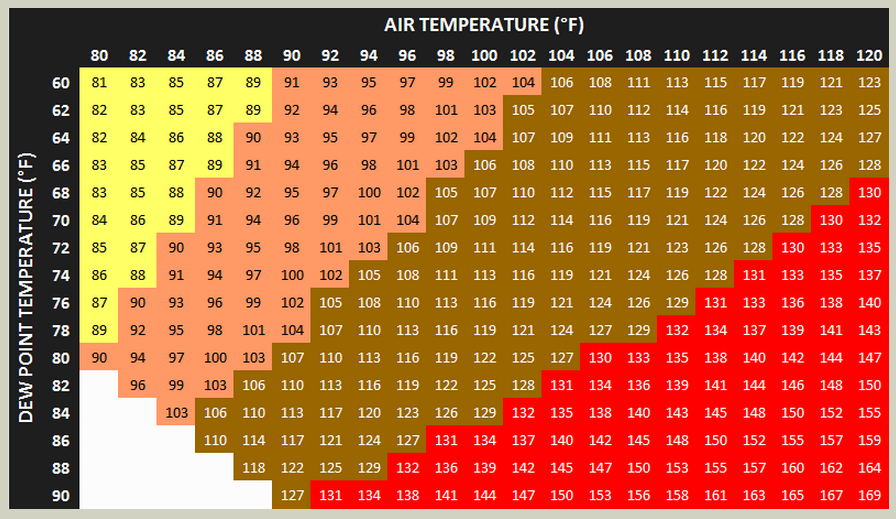We’ve all heard people talking about a hot and humid day by saying that it was “90 degrees with 90% humidity outside”. The truth is, that except for a few places in the Middle East, it is nearly impossible to have that combination of heat and humidity, especially in the United States. To show why this can’t happen, we first will define what “relative humidity” is.
The air in our atmosphere can only hold a certain amount of water vapor. The warmer the temperature is, the more water vapor that the air can hold. Relative humidity is just the ratio between the amount of water vapor currently in the air compared to the maximum amount of water vapor that the air can hold. When the relative humidity is near 100%, you will usually have precipitation (rain or snow) or fog. A more accurate representation of how humid the air is can be found by using the dewpoint. The dewpoint is simply the temperature you’d have to cool off to so that dew can form. The higher the dewpoint, the more humid the air.
When you combine the effects of the temperature and the dewpoint, you get the “Heat Index”, also known as the “Apparent Temperature”.

As you can see from the chart above when the temperature is 85 with a dewpoint of 75, the heat index is 94. This is roughly the same as a temperature if 95 with a dewpoint of 60. If the first case it’s warm and very humid, while in the second case its hot, but not nearly as humid. A dewpoint above 80 degrees is fairly rare in the United States, only occurring near the Gulf Coast (due to the warm waters of the Gulf nearby), and occasionally near some of the cornfields of the Midwest, as moisture evaporates from the fields. Our initial example of “90 degrees with 90 percent humidity” would equate to a dewpoint of 86, a figure that has only been observed a couple of times, and usually close to the Red Sea or the Persian Gulf, where water temperatures can reach the 90s in the middle of summer. More likely, that humid day is 90 degrees with a dewpoint in the middle 70s, which is around 60% relative humidity.
The higher the heat index, the more you should limit your exposure outside and take necessary precuations. If you do need to be outside, make sure you drink plenty of liquids, wear sunscreen (SPF 15 or higher) and stay in the shade as much as possible. Prolonged exposure can lead to severe sunburn, heat exhaustion, or even heat stroke. You should also never leave children or pets inside a closed vehicle for even a few minutes.